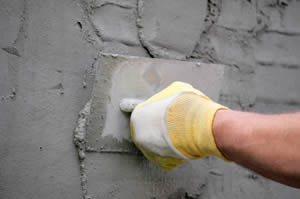Wall plasters are commonly made of a mortar mix of cement and sand, in a ratio of 1 to 3 or 1 to 4 This cement plaster is usually quite rigid and water proof. This does not allow moisture trapped within the wall to escape, leading to moulds on the walls later on.
Cement plaster.

Also, due to the rigidity, cement plasters are prone to cracks when the wall support shifts during settling. The advantage of cement plaster is the ability to set and harden within a very short time.
Solution.
Lime.
Lime plasters have been used for hundreds of years.Cement is a relatively new product, less than 100 years old.
Lime plaster is mixed in the same 1 to 3 and 1 to 4 ratio as cement. The advantage of lime plaster is the special effect of self healing, whereby cracks on the wall fill up with the calcium carbonate emanating form the rest of the lime plaster. Lime also allows the wall to breath, letting out any trapped moisture in the middle.
Cement plus Lime.
Cement can also be mixed with lime and sand to add to the cement and lime advantages into plaster. A ratio of 1 to 2 to 9 for cement, lime and sand.
There is a church built in the 1940s in the United Kingdom with the same mix and is still standing to date.
http://ihbc.org.uk/context_archive/53/Limemortar_dir/Limemortar_2.htm
The initial layer that supports to the existing wall can be made abit stronger to help in bonding. The subsequent layers that stick on to the initial later can have a weaker mix.
Lime addition helps to improve the workability of the plaster, making it easier to spread with a trowel.
Francis Gichuhi Kamau, Architect.
info@a4architect.com
0721410684


Leave a Reply